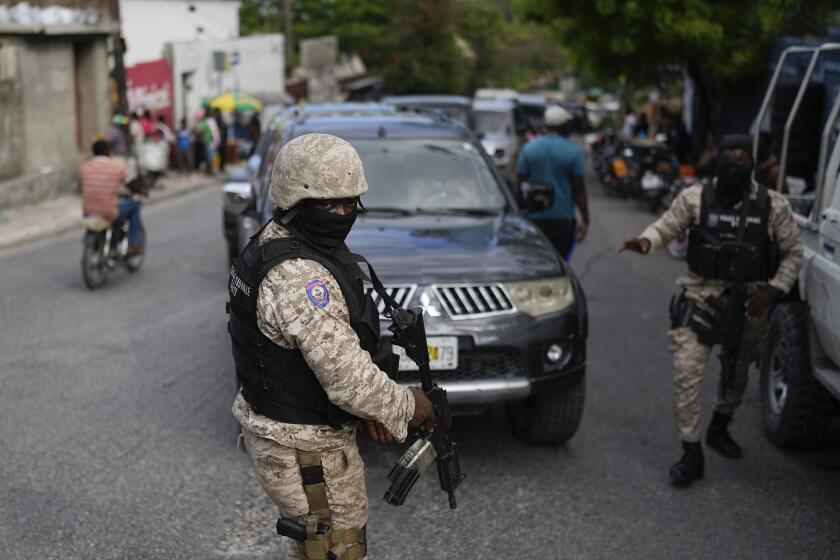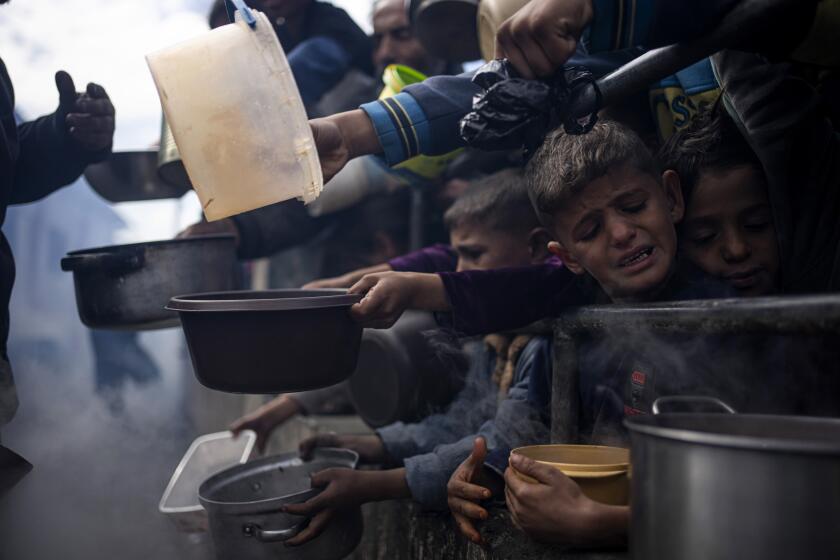Irony of Body-Recovery Woes: There Was a Plan
Of all the troubles that followed Hurricane Katrina, the continuing turmoil surrounding the bodies of those who died seems like the one that could have been prevented.
Unlike other aspects of the emergency response, dealing with mass casualties was one thing for which state and federal agencies had a fully developed plan. Only a month before, one of the key organizations had held a meeting here to make sure everything was ready.
There was just one problem: When the storm struck, it turned out that no one could agree on who should perform the most basic task of all -- collecting the bodies.
As a result, while police and others recovered some bodies, the organizations that were officially responsible for doing so did not collect the remains of any storm victims for a full week after Katrina and its floodwaters hit the city. Even after the collection process got underway, scores of bodies lay unattended for weeks.
Even now, the failure to recover the dead in a timely way stirs bitterness. On Thursday, New Orleans coroner Frank Minyard called a news conference to complain that the Federal Emergency Management Agency was not pushing hard to identify victims. He said he was deluged with anguished appeals from families unable to get the bodies of relatives released from the temporary federal morgue in St. Gabriel, La. The poor condition of many bodies, the result of their delayed recovery, is complicating the identification process.
On Friday, 15 more bodies were collected, bringing the Louisiana death toll to 1,003.
If the handling of the dead struck the public as one of the most shocking failures in the response to Katrina, it has confronted officials with an equally unsettling lesson for the future: The existence of elaborate plans for dealing with a crisis -- whether a natural disaster, a catastrophic accident or an act of terrorism -- may lull officials into a false sense of security.
What the storm exposed when it came to the handling of mass casualties was that flawed preparation might be just as bad as no preparation at all.
“We worked on [FEMA’s] National Response Plan; we worked on incident management systems so that you could have someone in charge and somebody calling the shots,” said Jimmy Guidry, Louisiana state health officer. “I think on paper we started working on these things, but in actuality they haven’t been very functional.”
On paper, the resources for dealing with large-scale fatalities seemed substantial.
They included FEMA’s Disaster Mortuary Response Teams, which are specially trained civilian units of 30 or more morticians, forensic dentists and other experts culled from around the country. The Pentagon sent in nine Army mortuary units from the 54th Quartermaster Company out of Ft. Lee, Va. Kenyon International Emergency Services Inc., a private disaster management firm, quickly dispatched a mobile morgue and a team of its own specialists from Houston, with more to follow.
Moreover, in planning sessions, FEMA, state and local governments had made “casualty management” -- handling the dead efficiently -- a priority. They issued joint-readiness reports and conducted “table top” exercises in which officials role-played what they would do. A month before Katrina, FEMA held a conference in New Orleans to fine-tune the joint plans of its DMORT teams.
None of that exposed the weak link: bringing in the bodies.
The DMORT teams, for example, all arrived quickly after Katrina and were ready to help, FEMA spokesman David Passey said, but “they did not come to New Orleans expecting to pick up bodies.”
In normal circumstances, local parishes are responsible for that. Within hours of Katrina hitting on Aug. 29, however, parishes began sending a barrage of SOS pleas to the state capital and to Washington, saying their coroners’ offices had been knocked out.
Many mortuaries and funeral homes in New Orleans and other hard-hit parishes were also flooded and without power. Most said they were too overwhelmed to deal with body recovery.
Within 24 hours of the hurricane’s landfall, Guidry and other state officials said they asked the federal government to take over. FEMA told state officials that Washington was not responsible for providing body-recovery workers and related equipment, including body bags, according to Guidry and others.
FEMA spokesman Passey said the DMORT teams were supposed to perform more skilled tasks.
With no one stepping up to retrieve bodies, federal officials on Sept. 6 called Robert Jensen, president of Kenyon, the private disaster management firm, and asked whether Kenyon could do it. Jensen agreed to the task but said he would need time “to ramp up.” Kenyon’s mobile morgue, dispatched to Louisiana, had been redirected to Houston only to be sent back to Louisiana again, according to Jensen.
As bodies remained uncollected, federal and state officials became upset and demanded a quicker response than Kenyon said it could provide. Jensen blamed Washington for not requesting the firm’s help earlier.
“I think the federal government gave the impression that it had this huge DMORT network that was capable of handling all the needs of the local communities, and that’s just not the case,” Jensen said.
When the Kenyon teams made it into the field sometime around Sept. 10, they ran into DMORT volunteers, who by then had been told to pitch in on body recovery. Also on the scene by this time were the Army’s special mortuary units.
That meant three sets of recovery agents were operating independently. Those familiar with the situation said there were times -- after the system’s shortcomings gained national attention -- when representatives of all three were splashing through the same neighborhoods in search of bodies, while at other locations no one was recovering bodies.
In the meantime, several hundred volunteer funeral directors and pathologists who had also come to help often found themselves mired in FEMA paperwork or waiting for something to do, according to several of the volunteers and an official of the National Funeral Directors Assn.
At one meeting at the state Emergency Operations Command in Baton Rouge almost a week after Katrina, Jensen was confronted by Army Lt. Gen. Russel L. Honore, the hard-charging Louisianan who was commanding of the federal active-duty troops in the area.
Honore demanded that both the DMORT and Kenyon workers fall in line behind his troops, according to Jensen and federal officials. Jensen said he responded by saying it was impossible to follow such an order because so many other parts of the disaster response were operated by other authorities.
All sides, Guidry said, told state officials at one time or another that they did not want to work with the others. When Kenyon and FEMA could not agree on a long-term contract, the state negotiated its own contract with Kenyon. The state said it intended to bill FEMA for reimbursement of the entire two-month contract, which totals more than $650,000.
Several DMORT members said in interviews that they were not averse to picking up bodies and that they had done so in past crises. But they said they were given conflicting orders about what to do and whom to report to.
“Body recovery is certainly an issue that has come up in a lot of internal conversations here,” said FEMA spokesman Butch Kinerny in Washington. “It is one of the things we need to revisit.... Certainly it could have gone better.”
More to Read
Start your day right
Sign up for Essential California for news, features and recommendations from the L.A. Times and beyond in your inbox six days a week.
You may occasionally receive promotional content from the Los Angeles Times.






